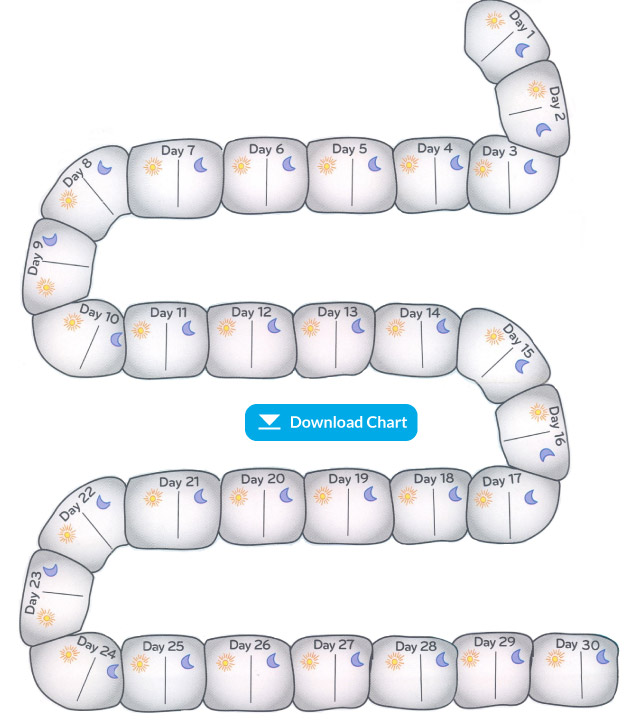Preventive care
During our preventive care appointment, we may:
- assess your child’s diet, current oral hygiene routine, habits and extra curricular activities to determine any pre-existing risk of cavities, gum disease, dental trauma or malocclusion
- use special “paint” on your child’s teeth to determine the extent of plaque build up, which is a risk factor for cavities and further complications
- clean and polish your child’s teeth using professional instruments whilst checking the teeth and gums for any cavities, gingivitis or early signs of tooth decay
- take additional radiographs (x-rays), photographs or perform special diagnostic tests where necessary
Dietary advice
Tooth decay is caused by how frequently we snack and how long our teeth are exposed to food at one time. This not only means lollies and fizzy drinks but can also include foods that are high in natural sugars or starch.
Every time we eat, our teeth are exposed to sugars contained in the food. The bacteria in our mouths, also known as plaque use these sugars to make acid. Prolonged exposure to these acids on our teeth can cause dental decay.
Many “healthy” or “everyday” foods are high in sugar content. Starchy foods such as bread, biscuits and milk products (including breast milk) consumed frequently can cause growth of dental plaque. This is why it is important to clean your child’s teeth at least morning and night.
We would recommend a wide variety of nutritional foods, especially those rich in calcium and low in acids and sugars.
Water and plain milk are best for hydration.
Some great healthy and teeth-friendly snack ideas include:
- cheese
- plain popcorn
- fresh fruit
- tuna or lean meats
- vegetables
- sushi or noodles
- yoghurt
- sandwiches or wraps
- whole grains
- pasta or rice
- nuts
- dips
Sweetened or acidic drinks should be limited as they can cause damage to teeth.
Avoid or minimise sweet and sticky foods. Treat these as “sometimes” foods rather than “everyday” foods. It’s best to eat them with meals and rinse your mouth with water afterwards if possible.
Try to limit these foods and drinks between meals and in school lunchboxes:
- juice and cordial
- soft drinks, sport or energy drinks
- flavoured milks
- cakes, sweet biscuits and lollies
- dried fruit such as sultanas
- muesli bars and roll ups
- jam, honey and spreads containing sugar
- sweetened cereals
Tooth brushing
Remove plaque daily to prevent tooth decay and gum problems. Brushing your teeth and gums for two minutes twice a day reduces the risk of tooth decay dramatically more than brushing once a day. Brushing before bed is especially important.
Toothpaste
Using a fluoride toothpaste twice a day is a proven way to stay free of decay. Fluoride in toothpaste makes teeth more resistant to acids produced after eating and drinking. Use fluoride to replace minerals lost from teeth and, in some cases, reverse early stages of decay.
Because children under 4 years of age tend to swallow rather than spit out excess toothpaste, we always recommend use an age appropriate low fluoride toothpaste unless instructed differently from our experienced clinicians.
Flossing / flossettes
Use dental floss to remove plaque between teeth where a toothbrush cannot reach. Parents should start flossing their children’s teeth when the teeth are close together. If you are flossing you child’s teeth it may be fiddly at first. It may help to lean their head back into your lap so you can have a better view into their mouth.
Use flossettes if you or your child has trouble holding or using floss. They are especially useful in young children with small mouths, with limited access, those with special needs and/or poor manual dexterity. Flossettes are great for children as they are easier to insert into the mouth and reusable!
Tooth Mousse™
Tooth Mousse™ is beneficial for patients of all ages. The calcium and phosphate in the Tooth Mousse™ will help replace lost minerals from the tooth surface and therefore help to protect from dental decay and erosion.
To apply Tooth Mousse™ simply squeeze a pea size amount onto your finger and coat all the teeth as if your finger was a toothbrush. To gain the maximum benefit from Tooth Mousse™, apply after brushing and flossing at night and leave on the teeth so it can work its magic overnight!


